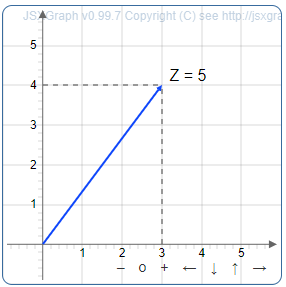Absolute Value of a Number
Description of the absolute value of real and complex numbers
The absolute value of a real or complex number is its distance to zero. This absolute value or simply modulus is always a nonnegative real number.
Absolute value of a real number
Simply put, you obtain the absolute value of a real number by omitting the sign. If real numbers are displayed on a number line, the negative numbers are to the left of the zero point and the positive numbers to the right of the zero point.
The absolute value of a real number is the distance from the zero point on the number line. The absolute value of a real number \(x\) is written as \(|x|\), or as a function \(abs(x)\).
The absolute value of \(3\) is equal to \(3\) \(|3| = 3\)
The absolute value of \(-3\) is equal to \(3\) \(|-3| = 3\)
The absolute value of \(0\) is equal to \(0\) \(|0|=0\)
Absolute value of a complex number
The representation of vectors of a complex number always results in a right-angled triangle consisting of the two catheters \(a\) and \(b\) and the hypotenuse \(z\). The absolute value of a complex number corresponds to the length of the vector.
The value of a complex number \(z = a + bi\) is \(|z|=\sqrt{a^2+b^2}\)
The figure below shows the graphical representation of the complex number \(3 + 4i\) an the absolute value \(|z| = 5\).
|
|
